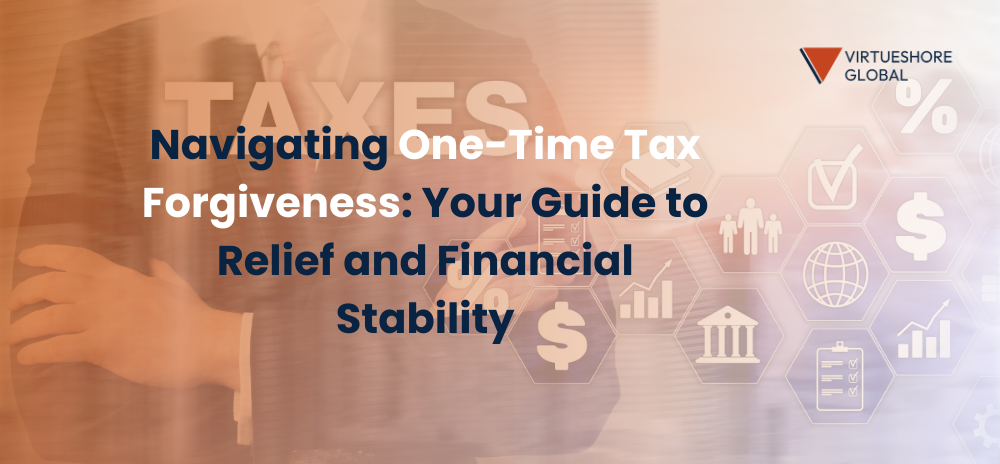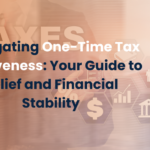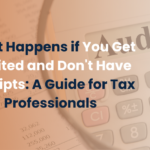If you can’t pay your taxes on time, penalties and interest start piling up quickly, making your debt seem even more daunting. It’s a common issue, with the IRS handing out about 40 million penalties to taxpayers yearly, as stated in the Taxpayer Advocacy Panel’s 2020 report. These penalties vary, but the most typical ones are for late tax filing, late payment after filing, and not paying the estimated amount owed from the previous year.
But there’s hope!
The IRS offers a program called One-Time Tax Forgiveness, also known as penalty abatement, which can reduce or eliminate these penalties, depending on your situation.
Let’s break it down:
Can the IRS Offer Relief for Tax Debt?
Suppose you’ve consistently met your tax obligations over the years but have recently made an error, such as missing a tax filing or payment deadline. In that case, the IRS may be willing to consider your request for penalty prevention and relief. They also have other methods, like the Fresh Start program, to help small business owners manage and clear their outstanding balances. However, getting one-time tax forgiveness is challenging, as the criteria are strict, and only some qualify.
What is One-Time Tax Forgiveness?
One-time tax forgiveness, or penalty abatement, is an IRS program that forgives penalties for taxpayers who made a one-time error in filing their income tax return or paying on time. This program isn’t for those who habitually file late or have multiple unresolved penalties.
There are three ways to seek one-time tax forgiveness:
- First-time penalty abatement
This program is the IRS’s main way of helping taxpayers, whether they are individuals or business owners, who are facing penalties for the first time. It allows you to explain why you couldn’t file or pay your taxes on time with a valid and reasonable justification.
Interestingly, many eligible taxpayers may need to be made aware of this program, and in recent years, only a small fraction of penalties have been forgiven through it.
To qualify for this, you must:
- Have filed all your tax returns
- Have paid your outstanding balance or arranged an installment plan with the IRS
- Have no prior penalties in the past three years
It’s a good idea to pay your debt before applying for relief, as the failure-to-pay penalty grows until the tax is fully paid.
- Reasonable cause
If you don’t qualify for first-time penalty abatement, you can request the IRS to waive your fees based on reasonable cause. This might include a fire, natural disaster, inability to obtain records, serious illness, or unavoidable absence. Lack of funds alone won’t suffice; you need supporting documents, such as hospital records, court records, or doctor letters.
For instance, if a family member’s death prevented you from filing on time, you’d need a death certificate to support your claim. If a fire destroyed your business records or delayed your filing, you’d need fire department or police reports and letters requesting copies of your tax documents.
Always keep records from the IRS, financial records and documents from relevant authorities.
- Statutory exception
You can request a statutory exception if you receive incorrect written advice from the IRS. This involves filing Form 843, Claim for Refund and Request for Abatement, including your request for advice, the erroneous advice you followed, and the amount of taxes and penalties related to the IRS advice.
Remember to keep all relevant documents and correspondence from the IRS.
How to Request One-Time Tax Forgiveness
When you ask for one-time tax forgiveness to clear your tax penalties, getting help from a tax expert like a tax attorney, enrolled agent, CPA, or tax resolution firm is a good idea. They know the ropes and can increase your chances of getting approval.
Tax professionals can:
- Write a Letter: You can write a letter to the IRS explaining why they should remove your penalties. Make sure to attach any documents that support your case. Then, send it to the address listed on the IRS’s notice about the owed tax amount.
- Fill IRS Form 843: This is an official form you or your tax expert can fill out to request penalty abatement. You’ll need to provide personal information like your address and Social Security Number. Additionally, you’ll explain the details of your penalty and why you think it should be forgiven. You can even attach the letter you wrote alongside this form.
- Get in touch with the IRS: Sometimes, requesting penalty abatement is simpler than talking to an IRS representative on the phone or visiting a local Taxpayer Assistance Center in person. They might ask you to provide supporting documents for your claim.
Importance of Proactive Financial Management
While one-time tax forgiveness is a valuable solution for addressing past tax mistakes and reducing penalties, other strategies should be in your financial toolbox. Proactive financial management is essential to prevent future tax issues and maintain your financial health.
- Utilizing e-commerce bookkeeping services
Effective bookkeeping and record-keeping are crucial for staying on top of your finances, including any potential one-time tax forgiveness requests. E-commerce bookkeeping services can help you track your income, expenses, and tax obligations accurately. These services can provide real-time insights into your financial status, making it easier to manage your tax responsibilities and identify potential issues early.
- Staying informed about tax obligations
Tax laws and regulations can change, and it’s essential to stay knowledgeable about your tax obligations, including any opportunities for one-time tax forgiveness. Regularly monitoring tax updates and seeking professional advice when necessary can help you ensure compliance and avoid unexpected tax liabilities.
- Seeking professional advice
Just as tax professionals can assist with one-time tax forgiveness applications, they can also provide ongoing guidance to help you navigate complex tax matters. Consulting with tax experts can help you make informed financial decisions, optimize your tax strategy, and minimize future tax risks, including the need for one-time tax forgiveness.
Are There Other Ways to Get Tax Relief?
If you don’t qualify for one-time tax forgiveness, options are still available to help you with your tax debt. The IRS’s Fresh Start program offers ways to ease your tax burden and avoid severe consequences like tax liens, seizures, or legal trouble.
Four main programs under Fresh Start can help you:
- Installment Agreement: This is like a monthly payment plan that lasts up to 72 months. It’s recommended if you can’t pay your full tax debt, including penalties and interest, all at once.
- Offer in Compromise (OIC): With an OIC, you propose to pay the IRS a reduced amount of what you owe. This option is available if you prove that paying the full tax debt would cause financial hardship.
- Currently Not Collectible Status: This status gives you a one- to two-year break from IRS collection activities if you can show that you can’t currently pay your tax debt through an installment agreement or in full.
- Penalty Abatement: This relieves certain tax penalties when you’re in a unique financial situation that limits your ability to pay.
How VirtueShore Can Help
When you stay caught up on your bookkeeping, managing your taxes can become even harder. That’s where VirtueShore comes in. Our team of expert bookkeepers can update your financial records and resolve any bookkeeping issues. This can help you find deductions that lower your total tax debt.
Your VirtueShore bookkeeper will provide accurate financial records you can use to work with the IRS. As a VirtueShore client, you’ll also have access to our network of trusted tax resolution partners who can assist you in negotiating your tax balance.
Regardless of your financial situation, VirtueShore can help you choose the best tax relief option.
Takeaway – Stay on Good Terms with the IRS
Running your own business is challenging, and dealing with back taxes can add stress. If you receive a penalty notice from the IRS, don’t panic. You might be eligible for one-time forgiveness or other tax relief programs. Taking control of your tax debt and keeping your financial records in order can help your business run smoothly and make tax time less daunting.
FAQs
What is one-time IRS tax forgiveness, and when might it apply?
One-time IRS tax forgiveness is a rarer option than penalty abatement and is usually considered when you can’t pay the full tax bill, or it would be inequitable to expect you to do so. Here are the main options:
- Offer in Compromise: This allows you to settle your tax debt for less than you owe based on inability to pay, doubt about liability, or inequitable tax administration. Rules vary for each option, and working with a tax professional for the best results is advisable.
- Partial Payment Installment Agreement: You can make payments until the collection statute expires, after which the remaining balance is waived. The IRS can rescind this agreement if your financial situation improves.
- Currently Not Collectible: While not a tax forgiveness program, this can halt IRS collection efforts. If you qualify, the IRS may stop collection, and the debt may expire, typically at least 10 years after assessment.
How can I apply for tax debt forgiveness (one-time IRS tax forgiveness)?
To apply for these programs, you must submit a paper application to the IRS and provide detailed information about your financial situation, including wage documents, bank statements, loan information, and potential appraisals of your assets.
How much can I save with tax debt forgiveness (one-time IRS tax forgiveness)?
The IRS doesn’t provide specific numbers on savings through these programs, but it’s estimated that people can save up to 80% of their tax bill on average. Keep in mind that the IRS rejects the majority of offer-in-compromise applications. Working with a tax attorney can increase your chances of approval, as they understand what the IRS looks for in your application and can assist with the process.








